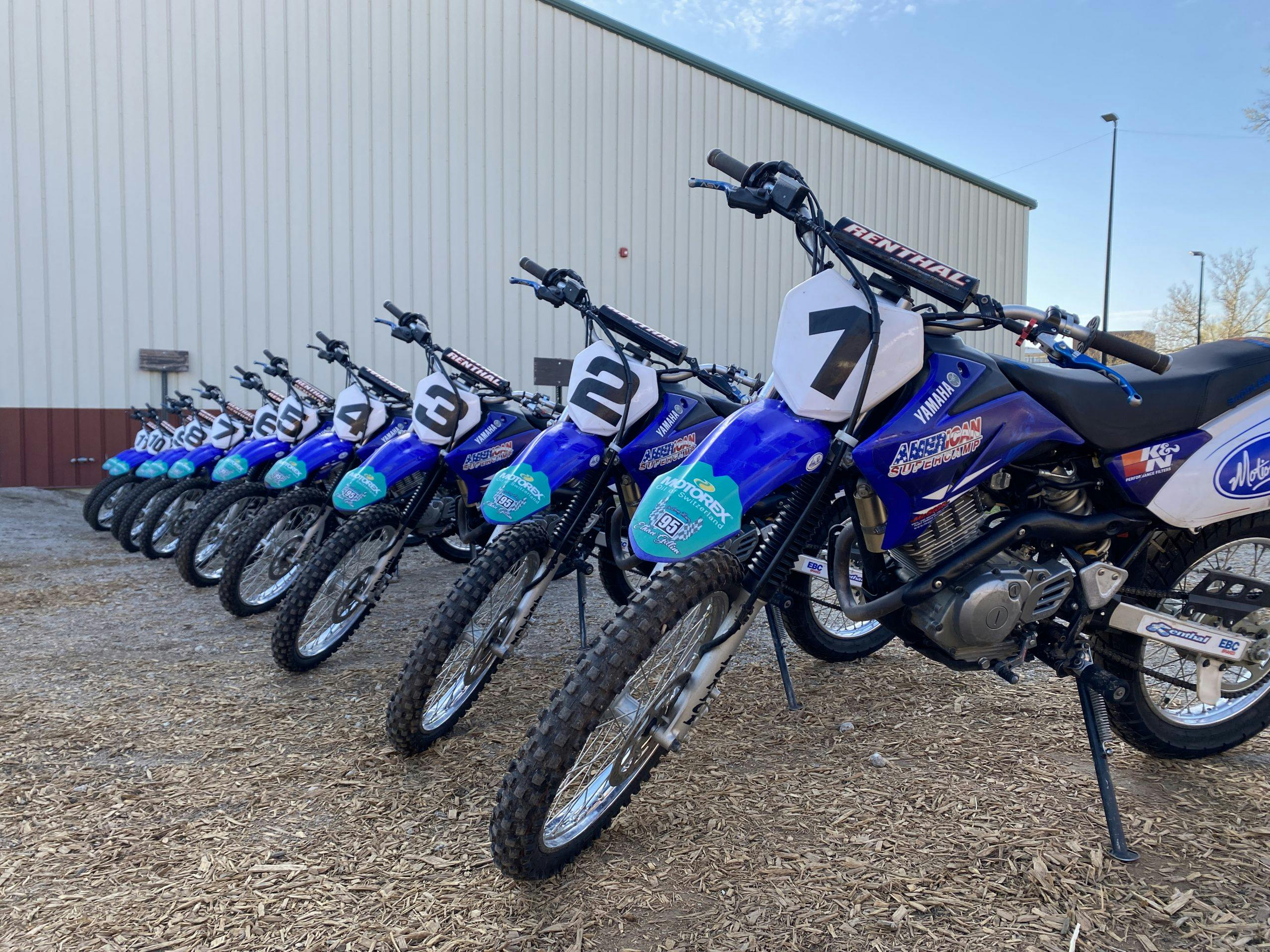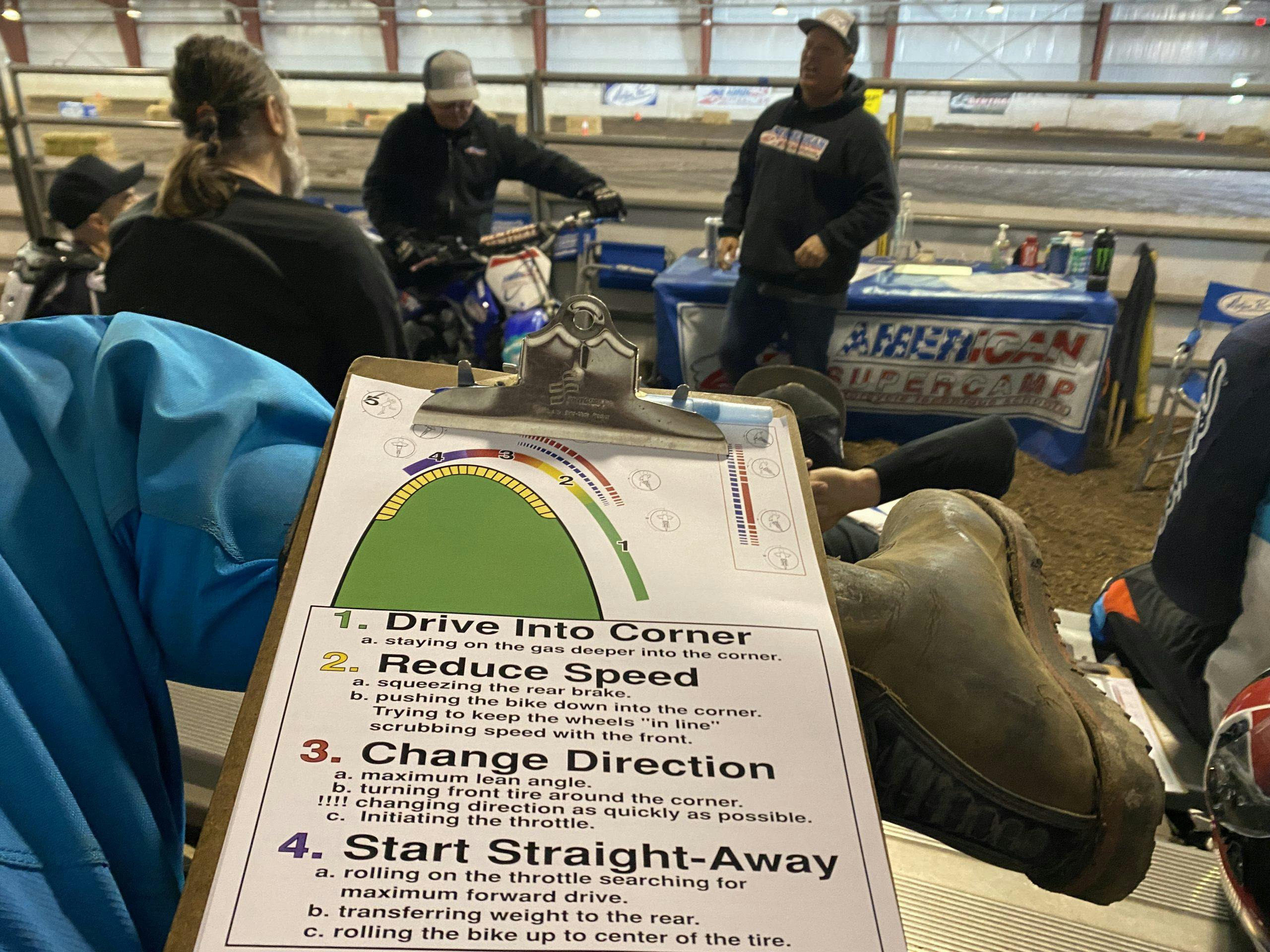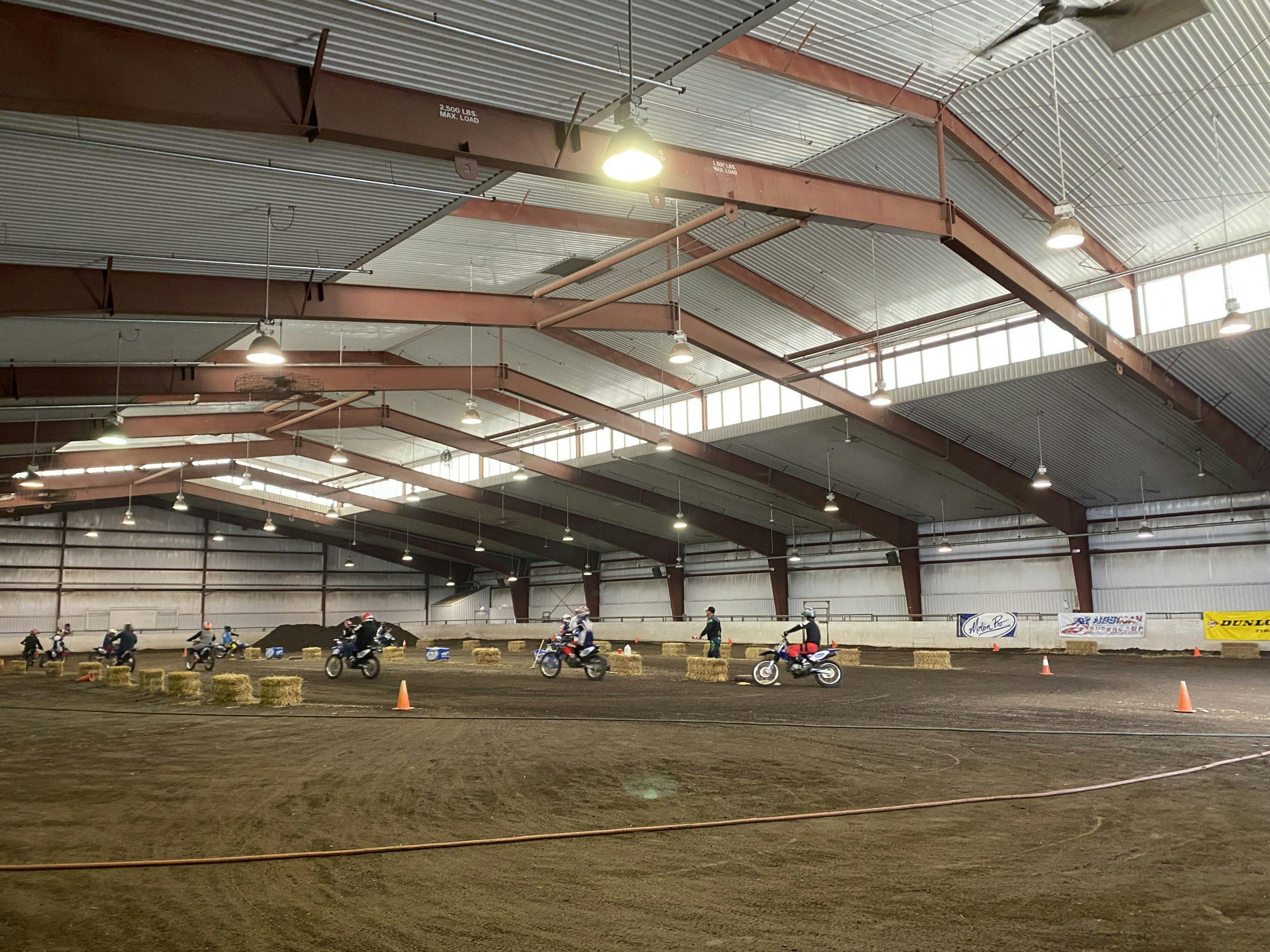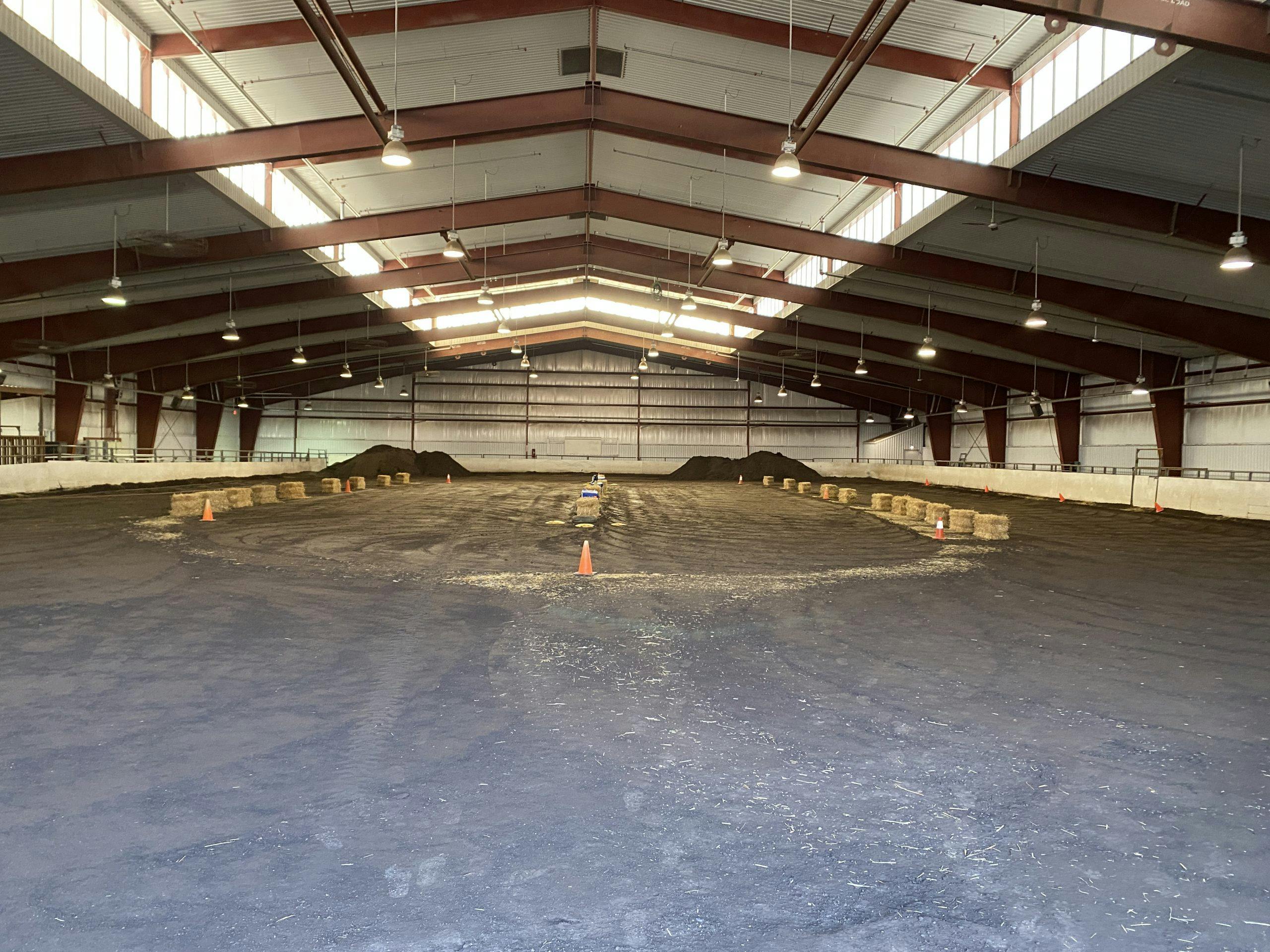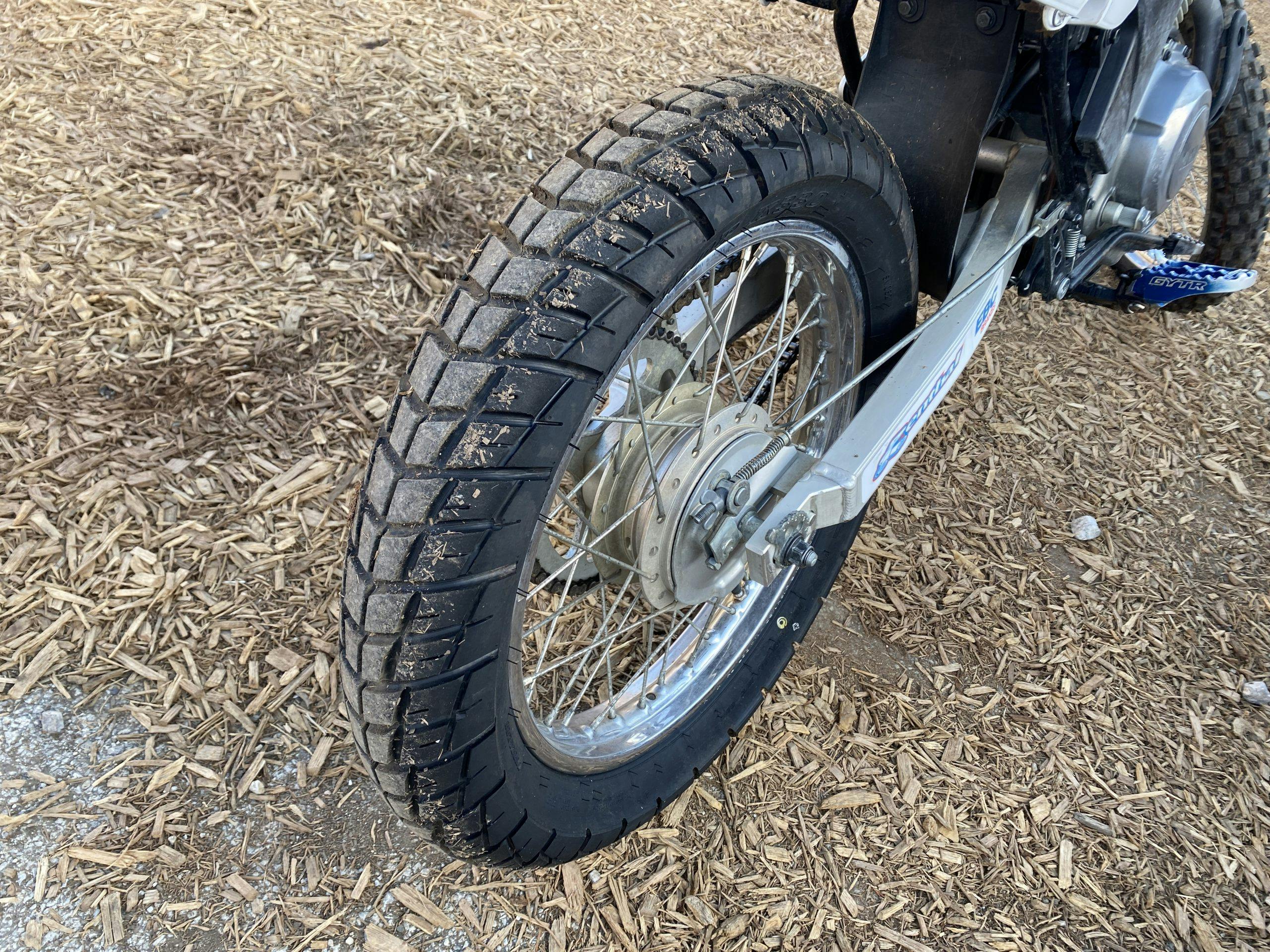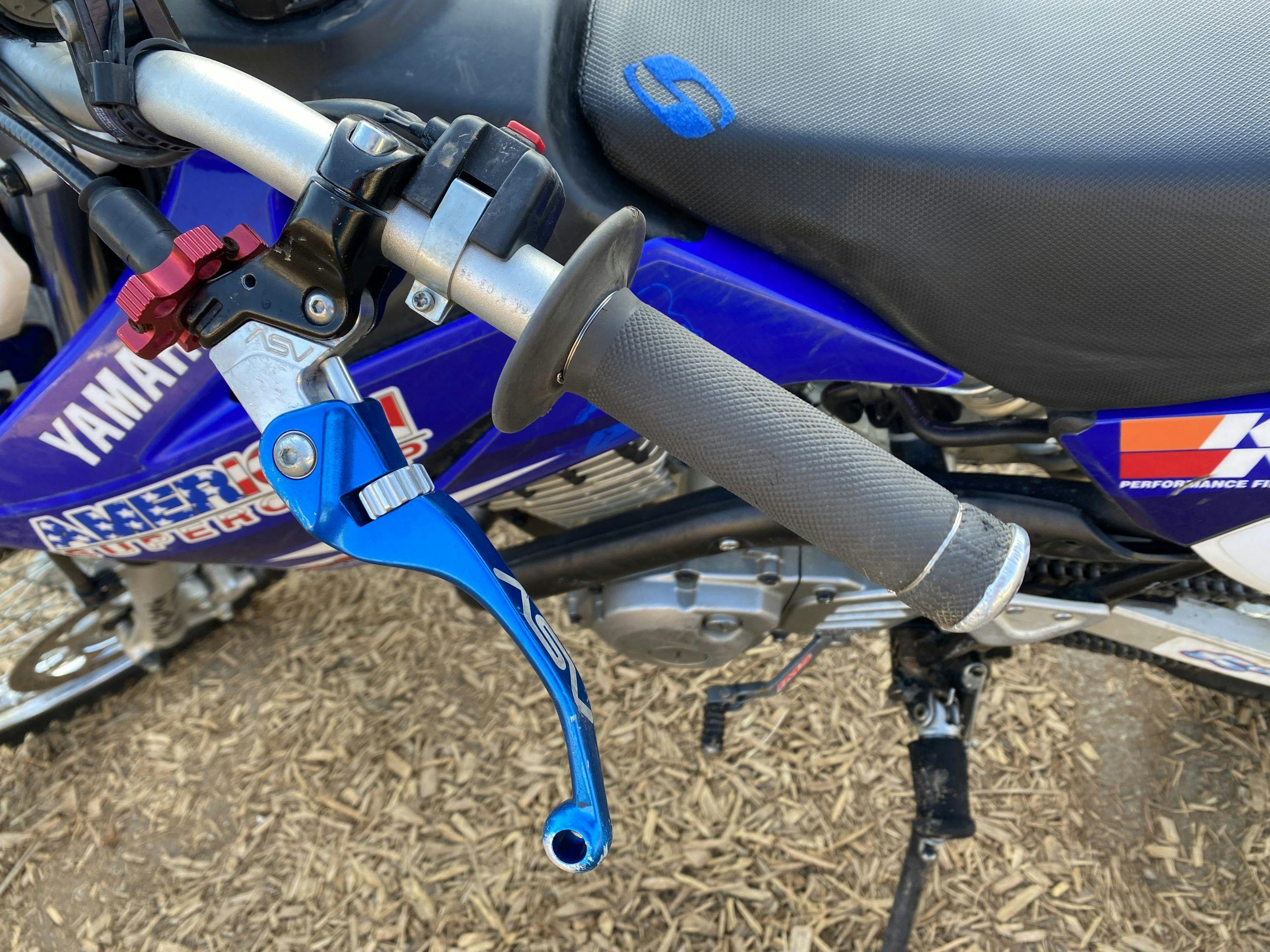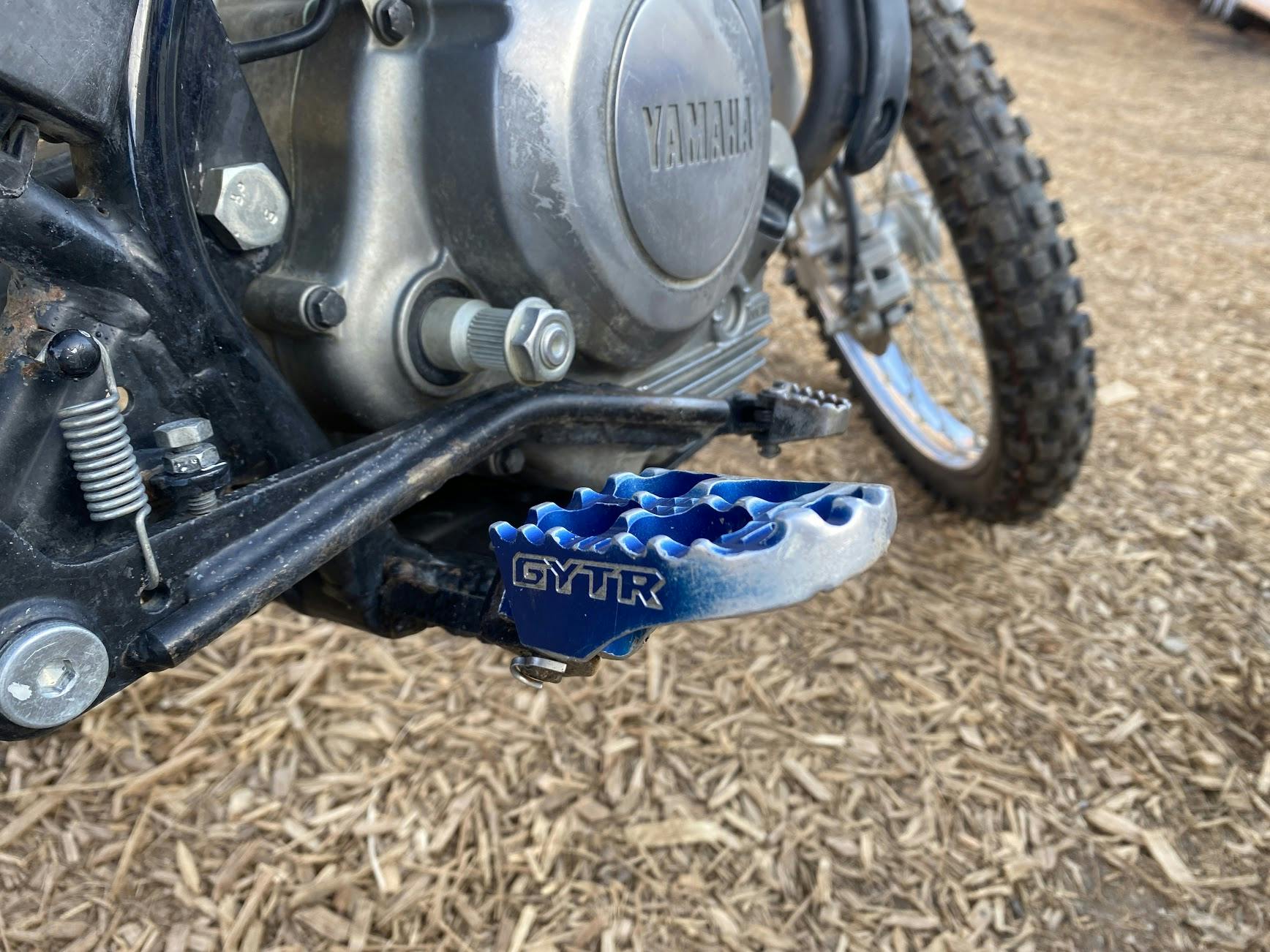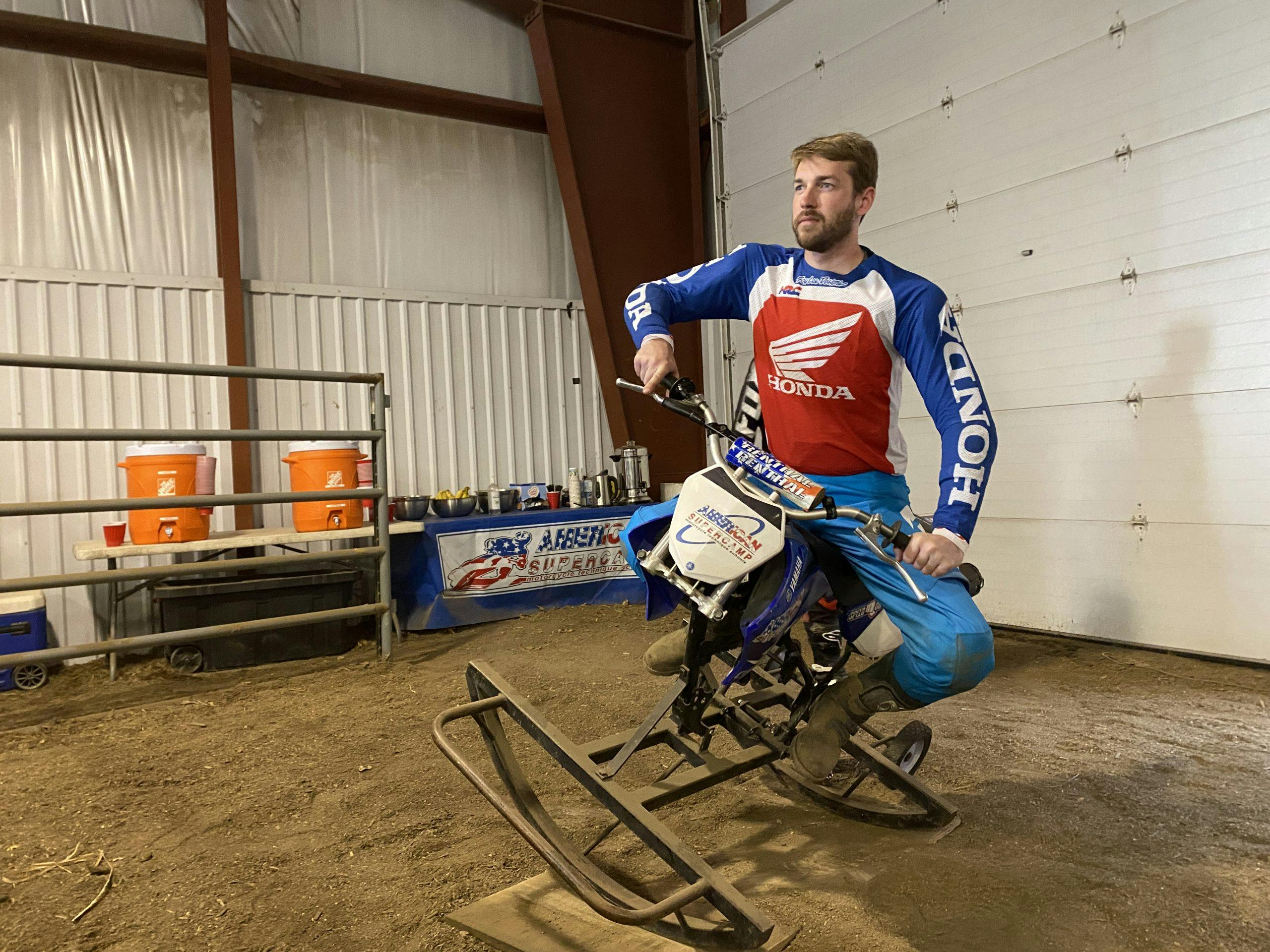I slid my way to better riding at American Supercamp, and so should you
As he launched into his opening speech at American Supercamp, Danny Walker shook two large plastic bottles—one filled with Tylenol, the other with Ibuprofen. “Today the meds are free—tomorrow, they’re $20 a pill.” I laughed. At 30 years old how beat up could I possible get riding in circles on a 10-hp bike designed for a seventh grader?
My capacity for imagination failed me. 24 hours and many sore joints later after my odyssey at American Supercamp’s two-day riding school, I realized that Danny, the school’s head honcho, used goofing around as a way of teaching a lesson. That turned out to be a consistent theme of this two-wheeled crash course, and I laughed just as much as I learned.
Based in Colorado but offering classes all over the U.S., American Supercamp is different than most other riding schools where you bring your prepped track machine, or pay to rent something fast, and then follow instructors around a big track. Instead, this crew dials everything down to the essentials. $660 gets you two days of riding, free lunch both days, and access to gear if you need it. Our venue was the Illinois State Fairgrounds in Springfield. More accurately, the goat show pen. I arrived by car, idling past the stockade and a parking lot full of horse trailers, keenly aware that this was a slice of the real Midwest. First changing into my riding gear, I next walked past a tidy lineup of a dozen Yamaha TTR125 motorcycles. Time to check in and get started.
If you aren’t familiar with Danny Walker, you might be wondering about his credentials. He’s a seasoned veteran of the motorcycle racing world, and as an instructor, multiple national champions can trace their racing careers back to him. American Supercamp has been coaching riders for over 20 years according to consistent principles and techniques, so even the most seasoned riders should walk into this experience open and ready to learn.
We started in the classroom, but hands-on instruction wasn’t far into the future. First, we discussed body position: Where to put your hips and arms to do the least amount of fighting with the bike, thus making the bike work for you. Then came four main steps: Drive into the corner, reduce speed, change direction, and start the straightaway.
Simple, right? I thought the same thing before rolling onto track and promptly getting humbled by instructor JD Beach, a multi-time national champion, who literally rode circles around me while kindly hollering out corrections. All of Supercamp’s instructors were similarly impressive, but most helpful were the ones standing in the corners of the small oval we rode the first day. A few quick gestures might tell you to watch your arm placement or lean angle, but when subtlety wasn’t working, a well-placed whack from a padded broomstick got the message across.
Supercamp’s program might appear to apply specifically to dirt-track riding, but it quickly became clear that the skills and understanding being taught here applied to a lot more than roundy-round racing. “Putting more tools in the rider’s toolbox,” was the message that stuck in my mind. As I worked on body position and familiarized myself with how the bike responded to specific inputs, I started to understand how perfecting my fundamentals would improve my entire riding repertoire, from street riding to track time.

The generous amount of riding time we got surprised me, especially because none of it felt like “just riding around.” The roughly 30 attendees were split into three run groups, and Danny set up a GoPro on a tripod to record our 8–10 minute sessions. He’d then plug that camera into a television in the “classroom area” while the other groups cycled through riding. It might have felt at times like we were setting lap times worth of pole position at the Peoria TT, but the video beaming into the other room didn’t sugarcoat our faults. Second gear on a TTR125 doesn’t break any speed records, but it isn’t slow, either. In fact, it was not until the final session of the first day that Danny asked me if I’d even been at wide-open throttle yet. I hadn’t—not because I couldn’t have, but because my lizard brain had subconsciously stayed my right wrist in an effort to protect myself.

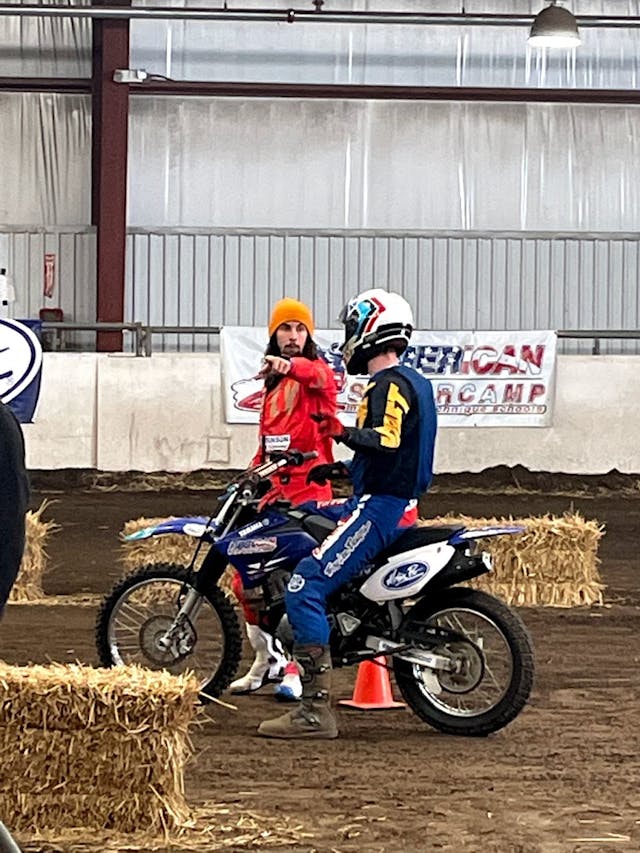
That self-preservation instinct worked, but only half the time. I took my fair share of dirt naps, which I expected would happen. Supercamp obviously prepared for crashes too, fitting the TTRs with fold-away ASV levers, big sturdy Renthal handlebars, and thick GYTR aluminum footpegs. The whole point, after all, was to learn limits and make mistakes. Off to the side of the classroom area was a motorcycle-turned-rocking horse that allowed us to experience how our body position was affecting the bike’s behavior during cornering. Bad habits are hard to break, so in between track rounds I sat on the rocking horse (no quarters required, thankfully) and attempted to will my muscle memory into action.
On day two, when we all congregated first thing in the morning, all but the youngest students had to admit that soreness was going to be a factor. Danny reminded us those sore muscle were the ones we should have been using all along, but our bad habits had locked them out. It was Ibuprofen for everyone before we hopped back on the TTRs for more learning. Danny dialed up the both the fun and difficulty for the second half of the Supercamp school. The first change was to adjust the track we were riding on from a small, second-gear-only loop to a larger, U-shaped course. This meant, with each lap, we had to practice body position for both right and left turns, plus a long sweeper thrown into the mix that demanded a 2–3 upshift and 3–2 downshift.
The sheer number of corners I took over two days taught me the value of repetition. We all got better and better, but instructors were always there to demonstrate better technique. It became clear that inherent talent was a lot less important than commitment to putting the learning into repeatable action. Even time spent eating our delicious catered lunch was productive, as we all sat around and picked the instructors’ brains for advice. Everyone you meet at American Supercamp is laser-focused on becoming a better rider or helping you become a better rider.

If you would have told me two months ago that riding around a small oval on a TTR125 for two days could boost my confidence and skill to this degree, I would have laughed at you. To be fair, though, it wasn’t the bike or the track that taught me anything; I could have ridden around that goat pen for months alone and learned zip. Danny and his crew of instructors had more knowledge and experience than my amateur brain could ever retain in two days of camp, but they managed to pass on quite a lot. As I continue to strive to be a better rider and racer, I fully expect to revisit Supercamp, adding even more tools to my toolbox. If you are serious about riding, and improving, I can’t recommend this class enough. For best results, pack a stash of Ibuprofen. You won’t regret needing it.
